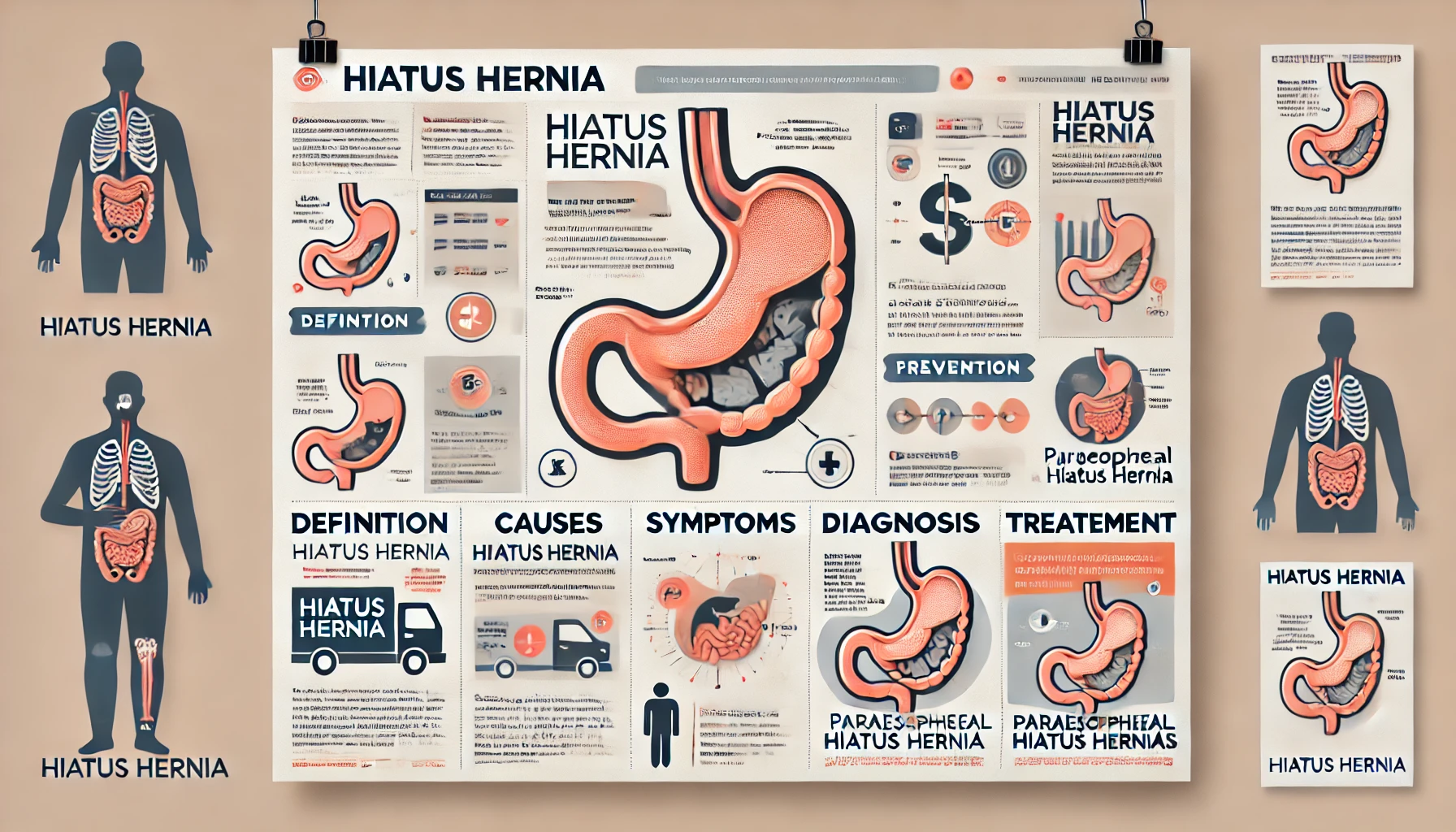
Hiatus Hernia: A Comprehensive Overview Hiatus Hernia: A Comprehensive Overview

Definition
Hiatus hernia occurs when part of the stomach protrudes through the diaphragmatic hiatus, the opening in the diaphragm for the esophagus. Most cases are asymptomatic, but some may lead to symptoms of gastroesophageal reflux disease (GERD).
Causes
The exact cause is often unknown. It is usually acquired due to stretching of the fascial attachments between the esophagus and diaphragm.
Types of Hiatus Hernia
1. Sliding Hiatus Hernia (most common): The gastroesophageal junction and part of the stomach slide above the diaphragm.
2. Paraesophageal Hiatus Hernia: The gastroesophageal junction stays in place, but part of the stomach is adjacent to the esophagus, posing a risk of strangulation.
Symptoms
• Most sliding hernias are asymptomatic.
• GERD symptoms: heartburn, chest pain, regurgitation.
• Paraesophageal hernias may cause incarceration, strangulation, or gastrointestinal bleeding.
Diagnosis
• Barium Swallow: Primary diagnostic tool.
• Upper Endoscopy: Used when needed to evaluate symptoms.
Treatment
• Asymptomatic Sliding Hernia: No treatment required.
• GERD Symptoms: Proton pump inhibitors (PPIs) for acid suppression.
• Paraesophageal Hernia: Surgical repair is recommended due to risk of strangulation.
Prevention and Self-Identification
• Maintain a healthy weight and avoid heavy lifting to reduce abdominal pressure.
• Watch for symptoms like persistent heartburn or chest pain and seek medical advice if they occur.
Hiatus hernia can often go unnoticed but should be addressed if symptoms arise, especially in paraesophageal cases. Early diagnosis and treatment are key to avoiding complications.
Patient Note: If you experience unexplained chest pain or frequent reflux, consult a healthcare provider.